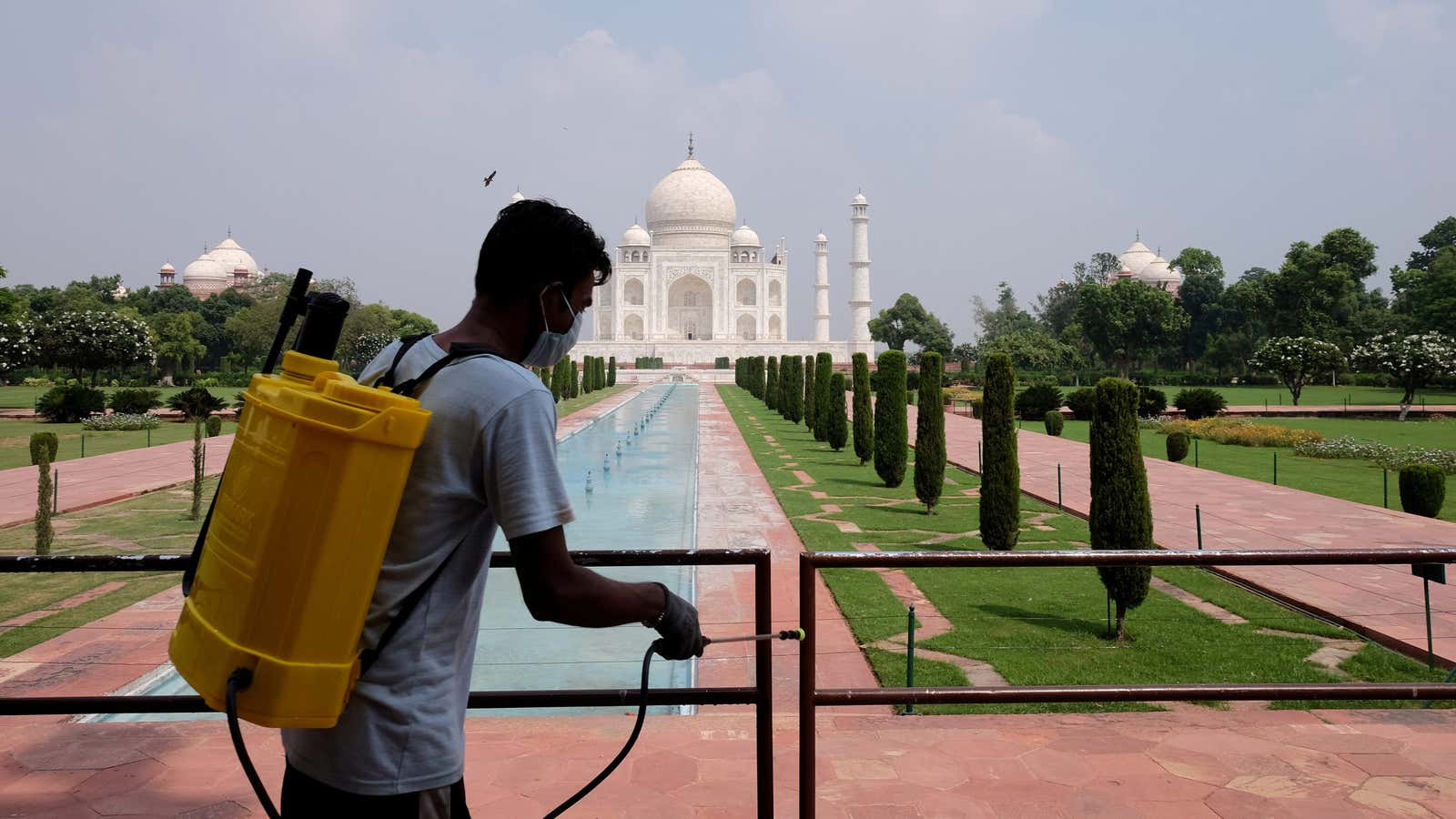India’s beleaguered hospitality industry has reason to cheer after months.
From Oct. 15, the country will begin issuing tourist visas again to those arriving by chartered flights. Those flying in by regular commercial flights will be able to do so from Nov. 15. This decision by India’s home ministry has come amid fewer Covid-19 infections being reported and roughly 70% of the country’s adult population receiving at least one dose of the vaccine.
The testing, vaccination, and quarantine rules for inbound travellers are yet to be notified, though.
International tourists visiting India brought in a sizeable $30 billion in foreign exchange in 2019, according to government data. The earnings fell by over 76%, down to around $7 billion in 2020, following the pandemic-induced lockdown since March that year. This is in line with the fact that foreign tourist arrivals in India were down 75% in 2020 compared to the year before.
The easing of restrictions has also been well-timed with the peak holiday season in the country.
Foreign tourists who come to India
In 2019, nearly 50% of all international tourist arrivals in India were between October and January. This also coincides with India’s festival and wedding season, a big draw for non-resident Indians (NRIs) visiting their friends and family. In 2019, the year before the pandemic, the 6.98 million NRIs who visited India accounted for nearly 40% of all international arrivals.
Whatever be their nationality, a huge majority of those who travel to India do so for leisure.
States like Goa, which heavily depend on tourism, are, therefore, hopeful about the upcoming holiday season.
“Goa makes up 92% of the charter flight arrivals in the country and the announcement ahead of the season will allow us to plan in advance and allow charter companies to book slots at the Goa airport,” Nilesh Shah, president of the Travel and Tourism Association of Goa, told the Hindustan Times newspaper.
Indian hotels took a hit
Given the travel curbs on global tourists, ultra-luxury properties turned their attention towards well-heeled resident Indians who couldn’t go abroad, Sanjiv Kapoor, president of the Oberoi Hotels group, told the Mint newspaper.
On the other end, entire markets like Delhi’s Paharganj, otherwise swarmed by backpackers and budget travellers, found it hard to survive. “Unlike other markets, which are thriving ever since the lockdown was lifted, shop keepers here have no business at all, as 80% of the business in the market depended on foreign tourists,” Subhash Vij, president of the Paharganj traders’ body, told Hindustan Times.
Similarly, Agra is popular with travellers of all stripes because of the Taj Mahal. Hoteliers and restaurant owners there have been a worried lot in the absence of international tourists.
🎧 For more intel on India’s hospitality industry, listen to the Quartz Obsession podcast episode on Indian weddings. Or subscribe via: Apple Podcasts | Spotify | Google | Stitcher.
A revival is now on the cards if only Covid-19 doesn’t play spoilsport in these densely populated spaces.
It also remains to be seen if India will announce quarantine rules.
Will India ask foreign travellers to quarantine?
India was drawn into a tussle with the UK government over the past few weeks over Covid-19 vaccinations and quarantine rules. Though the UK approved the India-made Covishield for travellers to be exempted from quarantine, those vaccinated in India were not initially recognised under its rules.
On Oct. 1, the Indian government retaliated with its own quarantine measures. It refused to recognise UK nationals as fully vaccinated. On Oct. 7, the UK announced that it would recognise those vaccinated with Covishield in India as fully vaccinated.
India has not officially retracted its quarantine rules, but source-based reports say it will soon.
Should India institute quarantine rules for unvaccinated travellers from high-risk countries, it could emulate a “quarantine-cation” model that some countries have experimented with.
For instance, the Phuket Sandbox programme was among the first to allow vaccinated travellers into Thailand, but restricted them to the island for seven days before they could travel to other parts of the country. This could also work well for beach-side holiday destinations in India like Kerala and Goa.
A similar programme was in place in Mauritius, which has, from Oct. 1, opened all its islands to vaccinated travellers.
